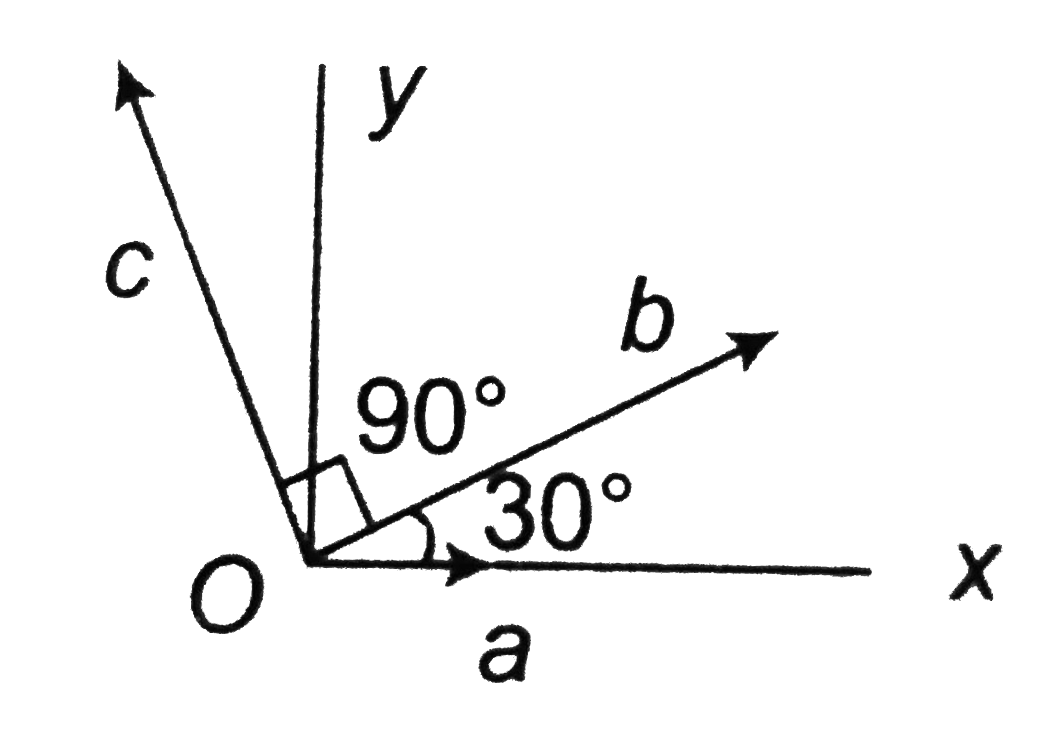Refer to figure Find a the magnitude, b x and y components and c. the angle with the X-axis of the resultant of −−→OA,−−→BCand−−→DE.
 .
.
The correct Answer is:A, B, C, D
x component of −−→OA=2cos30∘=√3
x component of −−→BC=1.5cos120∘ =- 1.5/2=-0.75)
x compon ent of −−→DE=1cos270∘= 1×0=0,
Topper's Solved these Questions
- BOOK - HC VERMACHAPTER - PHYSICS AND MATHEMATICSEXERCISE - Objective 25videos
PHYSICS AND MATHEMATICS
- BOOK - HC VERMACHAPTER - NEWTON'S LAWS OF MOTIONEXERCISE - Exercises42videos
NEWTON'S LAWS OF MOTION
- BOOK - HC VERMACHAPTER - REST AND MOTION : KINEMATICSEXERCISE - Exercises51videos
REST AND MOTION : KINEMATICS
Similar Questions
Knowledge Check
- Question 1 - Select One
What is the angle between A and the resultant of (→A+→B)and(→A−→B) ?
Atan−1(AB)Btan−1(BA)Ctan−1(A+BA−B)Dzero - Question 2 - Select One
The magnitude of x and y components of →A are 7 and 6 respectively . Also , the magnitudes of x and y components of →A+→B are 11 and 9 respectively . Calculate the magnitude of vector →B
A10B5C6D3 - Question 3 - Select One
The resultant of the three vectors −−→OA,−−→OB and −−→OC shown in figure is
 ArB2rCr(1+√s)Dr(√2−1)
ArB2rCr(1+√s)Dr(√2−1)
If vectors →A,→B and →C have magnitudes 8,15 and 17 units and →A+→B=→C, find the angle between →A and →B.
View SolutionIf vectors →A,→ Band→Chave magnitudes 5,12and13unitsand vec A + vec B =vec C,f∈dthe∠between vec B and vec C.
View SolutionThree vector as shown in (figure) have magnitudes |→a|=3,∣∣→b∣∣=4,and |→c|=10

a.Find the x and y components of these vectors.
b.Find the numbers p and q such that →c=p→a+q→b.View SolutionThree vectors →A,→B and →C are related as →A+→B=→C .If vector →C is perpendicular to vector →A and the magnitude of →C is equal to the magnitude of →A, what will be the angle between vectors →A and →B.
View SolutionThe magnitude of the x-component of vector →A is 3 and the magnitude of vector →A is 5. What is the magnitude of the y-component of vector →A ?
View Solution


 .
.